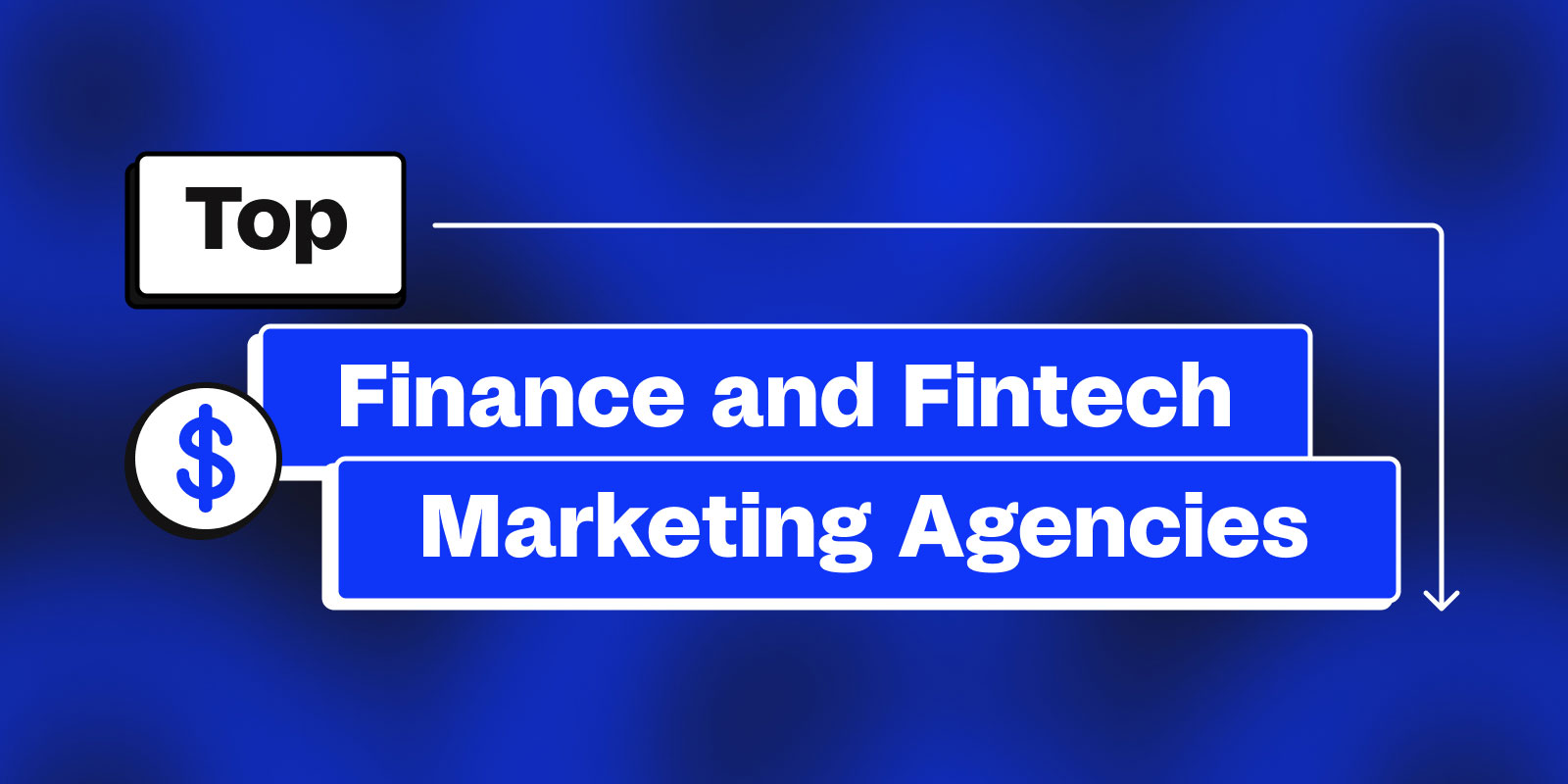A portmanteau of the words “finance” and “technology,” fintech refers to the integration of technology tools by financial services companies desiring to ease the lives of their customers through an optimized and automated user experience. One of the fastest-growing sectors in tech, it has an infinite range of applications that vary from mobile banking to cryptocurrency investing and integrates technologies of the likes of artificial intelligence, blockchain, and data science into their platforms.
Over the past few years, there’s been major growth for fintech companies and brands with many startups and businesses running without official bank licenses. Business Insider mentions that as consumers have increasingly begun to shift to alternative finance management methods, the global fintech market is expected to grow at an annual rate of 20% over the next four years, reaching approximately $305 billion in market value by 2025.
Posing a threat to traditional banking entities and their respective services, tech-savvy fintech startups are gaining momentum in this new digital age. They are blurring the lines between the current traditional and digital financial services, causing disruptions in the financial world and giving the long-established solutions a new and innovative digital facelift.
As the fintech market continues to grow incessantly, more competition for fintech brands has risen along the way, forcing brands to push their marketing and branding efforts to new levels. In 2022, it will be even harder to do so, and as a startup, brands will enter the picture as a complete unknown. For this reason, you must stay up-to-date with the current fintech marketing trends to successfully market your brand in this ever-growing industry.
If you’re a start-up looking to enter the fintech scene, you’ll need to ask yourself the following question: how can I differentiate myself among today’s fintech brands and how will I acquire new customers through my marketing efforts?
With this in mind, let us walk you through the trends you should watch out for in the fintech industry, including marketing trends that are expected to continue revolutionizing fintech this year and beyond.
Fintech Industry Trends:
The rise of embedded finance
The rise of the embedded finance sector has begun to emerge ever since a growing number of banks started to offer embedded solutions through their services. Many deem embedded finance is the future of fintech, one that promises a new wave of innovation and revolutionizes the way that consumers spend, save, and lend.
The term embedded finance refers to the seamless integration of financial services into non-financial entities, mobile apps, and business processes. In other words, it allows non-financial companies to provide their customers the opportunity to engage in financial services through their respective platforms, no matter the context they are in.
As embedded financial services continue to grow over the years, they are posing a threat to the roles of traditional banking processes. Non-finance companies are now able to offer financial solutions of the likes of loans and payments to their customers. All of this is made possible through the use of APIs, or application programming interfaces, that blend fintech and banking into the same mix.
Using the Banking as a Service model, commonly referred to as BaaS, through which banks can provide non-financial entities with embedded financial services for their platforms, any company in any industry can incorporate banking products and services without having to comply with traditional banking regulations.
Retailers, for example, can now offer buy now, pay later services into their platforms without having to adhere to the aforementioned regulations. They can simply integrate these embedded financial services into their platforms and offer their customers a completely innovative experience while shopping, changing perceptions about fintech and the future of the financial world.
A jump into the cryptocurrencies and NFTs bandwagon
With the rise of cryptos and NFTs, fintech companies are now getting a glimpse at how blockchain technology can easily disrupt the traditional banking services. Many banks have already begun using this new technology, and it is all because of the wide range of advantages it brings compared to traditional banking tech.
Companies like BNP Paribas and Banco Santander are paving the way for this new trend in the fintech industry. BNP Paribas has said it will begin experimenting with blockchain technology on their currency funds and order processing. On the other hand, the Spain-based bank is internally working on the development of blockchain-based solutions to reduce time and costs across the capital markets.
Fintech companies and other non-financial organizations are understanding how blockchain technology can optimize their services rapidly. Not only does this new tech provide incredible security for both participants of a transaction, but it can accelerate a company’s processes including but not limited to transfers, payments, and investments, without any delays or extra costs.
Companies should take advantage of this new technology as it is a trend that fintech companies cannot ignore if they desire to enhance their services while staying up to date with the latest technology in the market.
Open Banking
Based on the use of APIs and the API economy to create products and services that use data from other suppliers, the global trend of open banking is one to watch out for as a fintech company owner yourself. Due to the shift from traditional banking services to a reliance on digital transactions and self-service banking as a result of the pandemic, banks must serve the needs of their customers through digital services and must be tailored specifically to their needs.
Open banking, defined as a tech-driven, API-enabled method used to provide seamless financial services using customer data, allows customers to authorize the sharing of their financial data so companies can create optimized, personalized services for their customers. Not only will it benefit fintech companies in understanding their customers better to provide specific solutions for them, but it will also give customers greater control over their personal data.
Through the analysis of Big Data, fintechs can develop products, services, and marketing strategies tailored specifically to their customers. This type of data has helped create a variety of financial tools that can predict financial behavior and aid customers in managing their money along the way.
Having this in mind, fintech companies can harness the power of their customer data to provide more personalized and innovative financial solutions to their audience. This trend will allow fintechs to embrace big data to stay in the competition, changing the fintech industry for the better in terms of more transparency for customers and a new focus on customized services for companies.
The emergence of super-apps
Super-apps will be the next big thing in the fintech industry. These apps, as their name suggests, provide a large range of services and products through a single platform, including options for banking and other purchases.
As super-apps such as Alipay have gained momentum over the years in the Asian market, the West has yet to keep up with them. However, with the rise of fintechs starting to develop apps that offer a vast suite of services and products, this might be sooner than expected.
In the US, companies like Paypal and Block are striving to maintain their power as the leading super-apps in the market. Back in 2021, Paypal wanted to develop an app that, according to their CEO, Dan Schulman, would offer “a connected ecosystem where you can streamline and control data and information between those apps, between the act of shopping, the act of paying for that.” And they did just that; they launched a super-app that allows consumers to manage their financial needs including retail and investing.
Block, on the other hand, Block is already boasting an armament of services through their super-app. Having bought two giants in the financial services game, Afterpay and Cash App (which quickly became popular in the US), the company built an ecosystem of fintech services that ease and optimize the finances of their users.
Fintech companies can take advantage of and leverage the example of companies that offer super-apps to their customers with the goal of retaining consumers by focusing on offering a wide range of services through a single platform. This will help consumers find everything they need under a single service and will potentially build community among the fintech that provides such services.
Fintech Marketing Trends:
Hire the perfect marketing agency for your fintech brand.
Even if you have a great internal marketing team, outsourcing your marketing efforts to a partner agency is a significant trend to watch out for.
It can allow you to hand off the strategy piece to experts in the field as you focus on other important factors related to your fintech startup that require more of your attention.
When it comes to hiring the right marketing agency, remember that cost-effectiveness, experience, adaptability, and value are the key components to your ideal agency, so you must hire an agency that produces quality work, holds itself to the highest quality standards, one that has had good experiences with past clients, and is capable of innovating and adapting to new trends and technology in the ever-growing fintech industry.
If you need a guide to making the right choice, take a look at our article on hiring the right marketing agency for you and your business’ needs.
Tap into community-led growth.
Do you recall the feeling you get when meeting someone who also loves your all-time favorite movie? Or when someone can relate your weird fascination with the DC Comics universe versus Marvel?
This is community – the connection that arises from sharing similar beliefs with other people and taking advantage of this association to improve, promote, and sell your services can be defined as community-led growth.
By establishing a happy and enthusiastic customer base integrated into a single community, your fintech brand is off to an amazing journey. Community is everything, and although building it might take time, it is an effective way to market your services to your target audiences.
With community-led marketing, your customers will always be there for you. They will provide endless feedback on your brand and will allow you to create even better and more personalized experiences for them through your platform.
HubSpot has been killing it in this game. Creating a badge of honor program, the developer of marketing software products is encouraging their customers with incentives to have this badge displayed on their profiles. With this, HubSpot entices their customers into wanting to become certified and creates a community of badge-holders while subtly promoting their brand.
Engaging in community-led marketing is a must; it is the most effective forerunner to word-of-mouth and organic marketing. Having this in mind, you’ll be able to not only maintain current users but retain potential customers in the long run.
Build a fintech brand that is community-focused and you’ll see your platform grow in no time.
Put your brand out there using social media.
As a new fintech startup, you must embrace social media to tell your story. Through this approach, you’ll engage with consumers and take advantage of how easy it is to connect with them online. Social media is where your audience is, whether you like it or not, and you must produce attention-grabbing content to promote your fintech brand as best as you can.
In the age of mobile platforms, fintech brands could leverage their social media influence and partner with experts and celebrities to attract new consumers. Through activities such as influencer marketing, you can grow your business by promoting your products and services through them. It might not be the most affordable thing to do, but it will bring mass awareness to your target audiences and could potentially lead new consumers to join the community you want to establish.
This can be in the form of both organic or paid social. Organic social refers to the content produced by the brand that establishes their personality and voice and builds relationships through the sharing of informative content. On the other hand, paid social is basically advertising done through social media; it is any content produced being paid to be promoted.
Through paid social, across different platforms such as LinkedIn, TikTok, Instagram, Reddit, or Twitter, you can reach key decision makers including influencers, business owners, demographics from millennials to Gen Z, and more by creating content that is specifically targeted at and appeals to them in ways that clearly provide a solution to a problem the audiences might have.
When it comes to ad creative, it’s important to keep in mind that in an industry where trust is of the utmost importance, the ads need to inspire that trust across all funnel levels. To this end, focusing the ads on leveraging user-generated content from real users or creators, showcasing customer reviews and testimonials, and featuring data and statistics underscoring the reliability, security, and benefits of the product/service. With these ad formats, you’ll be able to humanize your brand in the eyes of your audience and provide as much social proof as possible to create a community among your users.
By building trust through transparency and humanizing your brand through your socials, your fintech brand will gain prominence in the lives of your customer base.
Take the example of Monzo by publicly owning to their mistakes, sharing internal communications, and sending users their earning reports. Public.com is leveraging TikTok creators who provide the vocal support and endorsement to the brand, creating the necessary social proof for younger generations to trust and use the app. Or even that of Plaid, which highlights different employees through Instagram and blog posts, showing the real faces behind the brand and humanizing their company in the process.
Using platforms like TikTok, Instagram, and Twitter in creative ways will allow you to scale your fintech brand in a way that feels seamless to your audience, and will help you engage with your already-established and potential community in a direct manner.
Create relatable content through content marketing.
Content creators are controlling the media right now. Their content is as powerful as any billboard on the highway or any commercial broadcasted on TV. In social media, content creators are promoting brands like never before, subtly or directly advertising any product or service through Instagram posts, a tweet, or even a TikTok video.
However, people don’t just want informational, repetitive content; they want content that they can relate to from brands that matter to them and from people they follow.
As a fintech startup, producing personal content is your go-to move. It will help you stand out from your competitors in ways that your audience will enjoy and will bring value to them. Not only does content have to be created through social media such as by user-generated content or sponsored ads, but it can come in the form of blogs or individual contributor posts through which a personal form of writing is conveyed.
SoFi is an amazing example of great content marketing. Offering a thorough resource center with how-to guides, including those of home buying and student loans, the fintech startup helps their customers make the best financial decisions, further driving engagement and providing customers with even better financial solutions.
Companies that exceed their customers’ expectations by creating unique content in ways the latter would never expect will rise above their competitors ー simultaneously building trust and credibility among them ー and will leave no crumbs when it comes to promoting their services creatively.
Prioritize the user experience at all costs.
If you’re reading this right now, I am 100% sure you don’t have the patience for bad UX. As we spend the majority of our days staring at our screens, the digital experience we expect has to be way above the standard; it must be simple and easy to use, or else we’re closing the page, aren’t we?
Thought so.
Working in fintech means you’ve heard about the term customer centricity; in the world of financial services, it refers to making your customers’ experience with their money easier and less of a burden. With this said, fintech startups must have a UX design that is intuitive and user friendly for their customers, focusing on customer-centricity while helping the latter find the best solutions to their financial problems.
Klarna has perfected this. Designing their experience for ease of use in a very aesthetic way, the digital payment tool, according to UX Planet, has found “a sensual feeling that humans are coded to like,” all through a user-centric experience that focuses on not only its visual image but its function. What Klarna has mastered is in fact its promise of a “smooth” experience for their consumers that goes beyond the payment process, one that is exuded through constant in-app experiences from pop-ups to even marketing campaigns. Leveraging a seamless experience through a powerful brand has activated Klarna’s growth loop that consequently attracts new customers along the way.
With smartphones and app usage increasing exponentially every year, having an unmatched user experience is a trend that you should watch out for in 2022 but in the years to come.
For this reason, think of your user experience as a key ingredient to your fintech’s success.
Understand and apply data analytics.
Big data helps emerging fintechs gain even more competitive advantage when used to predict consumer behavior to enhance customer experiences; it really is BIG data. With information gained from data analytics, fintech startups are presented with consumer insights that allow them to create platforms and experiences tailored to their specific target audiences.
How quickly real-time data emerges allows fintechs to adapt to ever-changing marketplaces, allowing them to implement strategies quickly in a strategic manner with the insights from consumers in mind. This will not only leave the traditional banking institutions struggling to keep up, but it will leave other fintech competitors behind the race.
Understanding and taking advantage of data analytics obtained is key to the success of your startup and the services you intend to provide. Remember customer-centricity is your anchor, so focusing on a customized experience for your users is one, if not the most, important factor to consider.
Data analytics will give you an insight into the minds and behaviors of your customers, so implement strategies that are specifically geared towards them through their acknowledgment and application.
Build mobile-first experiences for your customers.
Mobile-first, mobile second, and mobile third.
In today’s digital world, we do everything on our phones and expect to be able to do anything a computer can do with them. With this in mind, if you’re not basing your efforts on the mobile experience, your fintech marketing strategy will be a few screws loose.
As we spend countless hours on our devices, a potential customer’s first move will most likely be googling your app or website on their phone. They’re too busy to go and look for their laptops, and with everything being done through mobile, you cannot provide a substandard digital experience.
Having this trend in mind, you’ll provide your customers with the ability to manage their finances from anywhere whenever they want. With added security measures as well, a mobile-first vision will empower users to achieve financial stability with easier access and control to their money, all through an automated experience they can have right on the palm of their hands.
Overall, as the fintech industry continues to grow over the years, as a startup or fintech enthusiast, you must be watch out for these trends to enhance your customers’ experiences with your services and scale your business to new heights. With these trends, you’ll attend to your users’ needs and develop online experiences that will allow you to retain your customers in the long run. This article has covered everything you need to know to market your fintech successfully, so use it as a map of the territory to navigate it throughout your fintech’s growth journey.





